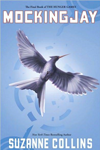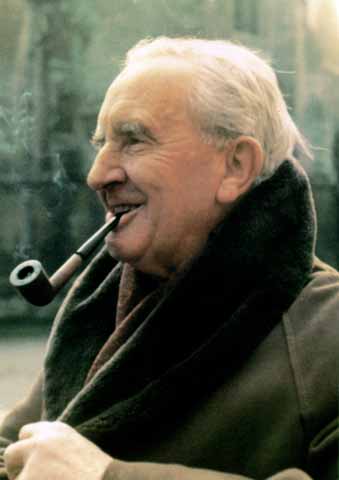
Search
Categories
Famous Authors
Top Selling Books

Book Home ![]() Books Information
Books Information ![]() Early American editions of The Hobbit
Early American editions of The Hobbit
Early American editions of The Hobbit
The early American editions of J.R.R. Tolkien's The Hobbit were published by the Houghton Mifflin Company of Boston and New York. They are very collectible but extraordinarily difficult to identify. This article describes all known printings until the third edition, which appeared in 1966.
|
 |
Introduction
In this description, "printing" and "impression"
are used interchangeably.
Early editions of a book as popular and enduring as J.R.R. Tolkien's The Hobbit inevitably attract the attention and money of both book collectors and fans. Because a publisher cannot predict accurately how the public will receive a new author, they usually print a small first run and follow it with reprints as needed. Often this first run is called a "first edition". Technically, however, the first edition spans not only the first printing but all printings until the type is reset. In the collectibles market, normally it is the first printing that commands the bulk of attention and money. That is because it was printed in small quantity and under risk of failure in the market. The people who bought the first copies pioneered the book's popularity, and those copies are justly considered precious. While the same is true of The Hobbit, the curious history of the book complicates and broadens the market considerably.
Most books either receive immediate attention in the market, or fail. The successful sell most of their copies within a year or two of publication. Now and then a book sells well and continues to sell for many years. The Hobbit and The Lord of the Rings were drastic exceptions to both patterns. Both works sold enough to induce the publishers to continue printing, but for the first twenty-five years of The Hobbit's life, and the first ten years of The Lord of the Rings, sales on both sides of the Atlantic amounted to little more than a few thousand copies per year. It was not until the mid 1960s that social trends flowered an acceptance and even hunger for the modern fantasy, which Tolkien had developed so long before almost on his own. An obscure author and his books exploded in popularity. Despite the fact that The Hobbit had already gone through fifteen printing runs and two distinct editions by then, suddenly all of them were collectible. By that time, printing presses were churning out far more copies every year than had been sold those first twenty-five.
Tolkien's publisher was George Allen & Unwin Ltd. of London. Houghton Mifflin of Boston and New York arranged to publish Tolkien's books in the United States. Since Houghton Mifflin did not Americanize the text, they were free either to set their own type or to import sheets from Allen & Unwin. In any case they bound their own volumes, usually distinctly from their British counterparts. The American versions differed from the British in one respect crucial to the collectibles market: beyond the first printing, most of Houghton Mifflin's impressions did not identify which printing run they came out of or even a copyright date. This failure has led to intense confusion in the collectibles market. Very few people can identify the Houghton Mifflin second editions, which were extant from 1951 to 1966. Hence people cannot be sure what they have or might be buying and therefore what it might be worth.
Very roughly, earlier printings are valued more than later. In particular, the first edition, with its very different account of Riddles in the Dark, is in great demand. However, the fifth overall impression, or the first printing of the second edition, seems to be garnering prices as high as the British fourth printing, which was the cheapest and most common of the first edition printings. Later second edition printings are valued much less than first edition printings or the first printing of the second edition.
The presence of the matching dust-jacket often doubles the value of any of these printings, particularly if it is in good shape. However, because the second American edition changes its binding color from printing to printing, they gain considerable charm displayed in array without their jackets.
The first edition
Houghton Mifflin Co. of Boston and New York published the first American
edition of The Hobbit in spring of 1938 following its September, 1937
debut in the United Kingdom from George Allen & Unwin LTD. For
this first edition Houghton Mifflin printed the sheets in the United
States, a practice they abandoned in later printings of The Hobbit
and all printings of The Lord of the Rings until the mid 1960s.
Some consider the first American edition of The Hobbit to be the most beautifully designed of any edition. Houghton Mifflin chose to print it in a larger size and on heavier stock than Allen & Unwin's first edition, and they chose to include four color plates of Tolkien's original artwork. Margins are ample and the typesetting well crafted for readability. The lettering on the tan cloth cover is printed in deep blue. The bowing hobbit emblem on the front and the dwarf's hood emblem on the spine are filled with bright red. Regrettably, however, the publisher chose to print the end-paper maps in red only, instead of the black and red chosen by Allen & Unwin. They also mistakenly put the Wilderland map in front and the Lonely Mountain map in back, the reverse of the description in the text. This error seems to have been corrected eventually, since properly ordered examples have been seen in the last (assumed) printing of the first edition.
Surviving dust-jackets on the first edition are exceedingly rare. It is not known whether that is because of attrition or because some printings were not jacketed or because lots directed to some markets did not come with jackets. What is known is that jackets have been reported on more than one of the printings and most commonly on the first printing. The jacket is a medium blue field all around. The front announces the title in white, beneath which appears, in color and framed in red, Tolkien's illustration of Hobbiton. The reverse displays Tolkien's illustration of Smaug on his trove, also in color.
It seems evident that Houghton Mifflin printed the first edition several times. The earliest printing shows on the title page the same bowing hobbit emblem visible on the cover, but in outline. At some point, however, the publisher replaced the emblem on the title page with the rather less appealing seated flautist. (Some say that the boots the hobbit wears in the emblem were acknowledged to conflict with the text's description of a bare-footed hobbit, prompting the publisher to replace it. However, the device comes directly from Tolkien's picture of Bilbo bowing Smaug on his horde of treasure. Tolkien defended that representation to an astute reader by saying that Bilbo had acquired boots along the way.) This earliest printing also has no half-title page. The first two printings mistakenly identify Chapter VII as Chapter VI on page 118. The third printing corrects the Chapter VII heading. A fourth distinct printing presents the Wilderland and Thor's maps as free leaves rather than end-paper paste-downs. The first printing's table of illustrations lists Thror's map as the front endpaper, in accordance with the text (page 30) but contradicting the actual order. The later printings of the first edition list the Wilderland as the front endpaper, in accordance with the actual order but contradicting the text. This mess was not fully straightened out until the second edition.
The second edition
Basics
Tolkien began work on The Lord of the Rings in the years after The
Hobbit's publication. As the story evolved, Tolkien realized he needed
to change how Bilbo and Gollum interacted in The Hobbit to suit the
plot of The Lord of the Rings. Allen & Unwin prepared a new edition
of The Hobbit for release in 1951, and Houghton Mifflin followed suit.
These American impressions from the 5th through the 14th were bound
from sheets printed in Great Britain, corresponding to the same George
Allen & Unwin LTD printings of the second edition. Unlike the
AU printings, the American copies do not state the printing until
the 18th in the second edition with the exceptions of the 5th, 11th,
and 12th, which state the full printing history. This makes them very
difficult to identify in isolation. The following list of "points"
was developed by Strebe² by comparing unknown American printings
to known British printings. Steve Frisby untangled the 9th printing,
which differs from its Allen & Unwin counterpart on page 315.
The American second editions from the 5th through 14th printings measure 12.7 x 19.0 cm, contain 315 numbered pages, and have end-paper maps printed in black, white, and red. The frontispiece is printed in color, but the remaining color plates of the first edition have been eliminated. With the exception of the 5th printing, the cover design is similar to the first edition, only smaller, differently colored, and lacking the bowing hobbit emblem on the front board. The 5th printing, on the other hand, is identical to the British 5th printing, even to the extent of stating George Allen & Unwin as the publisher on the title page. The jacket is identical as well. The only distinction is the notation "Houghton Mifflin Company" at the base of the book's spine.
It would be natural to surmise that Houghton Mifflin put out a 15th impression corresponding to the Allen & Unwin 15th, which is the final British printing of the second edition. However, no Houghton Mifflin 15th impression corresponding to the Allen & Unwin 15th has been mentioned by any researcher; nor has anyone reported one described or listed for sale. Houghton Mifflin seems to have abandoned the practice of importing sheets from Allen & Unwin after the 14th impression. This decision coincides with the rapid rise in Tolkien's popularity in the United States in the mid 1960s and may be explained by the publisher's need to print far more copies than they could legally import sheets for. Interestingly, the decision also coincides with a change of printer on the British side: through the 14th printing, Unwin Brothers Limited printed the book. Starting with the British 15th impression, C. Tingling and Co. Ltd., took over the printing, though the publisher remained George Allen & Unwin Ltd. Perhaps the change of printer is relevant to Houghton Mifflin's decision to print their own sheets. In any event the new format accounts for the 15th through 23rd printings and is described below in Later printings of second edition.